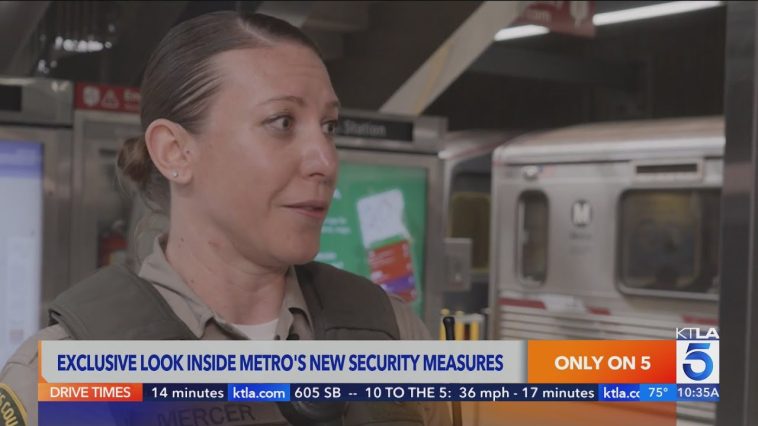The New York City subway system is slated to receive a security upgrade in the form of body scanners designed to detect concealed weaponry. The city’s Mayor, Eric Adams, announced on Monday that extensive trials involving thousands of tests have been successfully completed, paving the way for the technology’s integration. Admins claim that these scanners can be potentially deployed at select subway entrance turnstiles as early as this week or the following one.
An impact report was tendered by the Adams administration back in March, which initiated a 90-day waiting period. With the expiration of this period, they are set to kickstart a pilot initiative which involves the installation of the scanners at a few designated subway stations. While the exact location details remain undisclosed, officials assured that they will inform the public in due time.
This move towards enhanced security in subway stations coincides with recent claims from city officials of a decline in subway-related crime incidents. Year to date figures suggest a decrease of 7.8% in subway criminal activity. As excitedly articulated by these officials, the reduction in subway crime is partly due to an elevated police presence in the transit system.
In addition to these weapon detection scanners, the Metropolitan Transportation Authority (MTA) has made considerable strides in improving security surveillance. Half of the year’s target to equip all subway trains with cameras has been achieved. This proactive endeavor stipulates comprehensive surveillance by the end of the calendar year.
However, despite these security enhancements, operational challenges abound within the subway system. Frequent power and signal disruptions continue to inconvenience the commuters and plague their journey. MTA’s Chairperson, Janno Lieber, attributed Tuesday’s power disruption in Lower Manhattan not to heat but to the subway’s aging infrastructure.
Lieber has previously advocated for congestion pricing, which could have potentially infused $15 billion into the MTA budget. This financial contribution could have facilitated some much-needed improvements within the subway’s infrastructure. But a seeming financial crisis looms as the proposal was halted in its tracks by New York Governor Kathy Hochul, which resulted in significant deficit impacts on MTA’s financial planning.
Alongside the police force, the NYPD acknowledges the National Guard’s contribution to enhancing subway security. Their involvement includes conducting random bag checks, acting as an additional deterrent to potential criminal activity on the subway. Governor Hochul’s office released an update stating that the National Guard had been averaging 110 subway support missions a day.
Amidst these security advances and infrastructural challenges, the city’s leaders remain dedicated to providing a safer travel environment for its subway commuters. Looking beyond scanners and cameras, there’s a focus on a comprehensive, multi-departmental approach to public safety involving law enforcement agencies, local authorities, and external security organizations.
Pending the success of the pilot program for body scanners at the selected stations, the city hopes to expand this security measure to other subway stations. The goal is to provide a sense of safety and security to the millions of commuters who use the subway system daily, facilitating a smoother and more confident commute.
Despite the notable progress in reducing subway crime rates, city officials are not resting on these laurels. The pursuit of complete surveillance coverage and advanced security technologies like body scanners illustrates the commitment to further reducing potential threats.
The addition of body scanners along with surveillance cameras on trains represents a dual approach to improving overall subway security. These continuous, proactive efforts are a testament to the administration’s dedication to safeguard the city’s public transit system.
The city’s progression towards heightened subway security is further evidenced by its collaboration with resources beyond usual channels. Involving external entities such as the National Guard underscores the administration’s commitment to providing an added layer of security for subway users.
The city’s ongoing challenge with subway infrastructure clearly illustrates the need for comprehensive reform, energizing stakeholders to seek funding beyond traditional channels. The halted congestion pricing proposal points to the bureaucracy and challenges faced within public fiscal and strategic planning.
While the city continues to make strides in security advances, the harsh reality of aging infrastructure underlines the urgency for significant investment. Although new initiatives around security are applauded, the need for infrastructure upgrade remains a priority to ensure the overall functionality of the transit system.
In conclusion, New York City’s subway system will be the first public transit platform to implement body scanners to enhance subway security, embodying the city’s commitment to public safety and infrastructure modernization. As the year progresses, the city and its residents wait with anticipation for a safer, more secure commuting experience.


